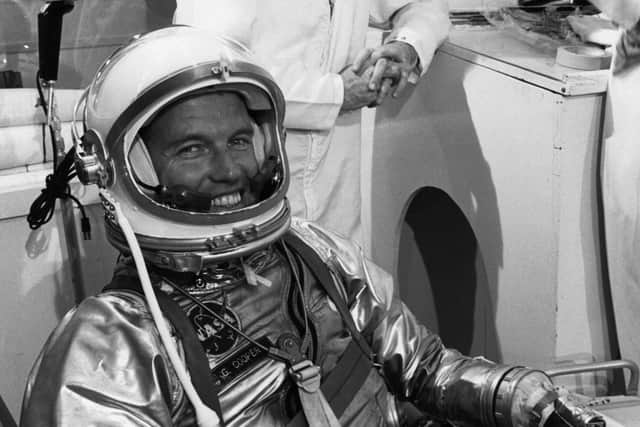Sky-man manhandles his way back to earth (1963) da
and live on Freeview channel 276
The 36-year-old “baby” of American astronauts had the most difficult task of them all – to guide his spaceship in its descent right down to sea level, with the hope of the automatic control taking over.
The slightest error and Cooper could have burned up as he re-entered the earth’s atmosphere, noted the News Letter, but he coolly followed the instructions of a predecessor in space, Colonel John Glenn, and landed spot on target within sight of the recovery carrier Kearsarge.
Advertisement
Hide AdAdvertisement
Hide AdIt was the most dramatic reported re-entry of any spaceman, with radio listeners throughout the world listening and a New York television station calling on viewers to pray for him.


Divers leapt into the water shortly after Faith Seven plunged into the Pacific and attached a flotation collar to the capsule, ready to hoist it aboard the Kearsarge after its 32 hours and 20 minutes hurtling through space. One diver fired a green flare to show Cooper was safe.
“Gordo”, as he was known to all his friends, signalled he could hear the swimmers outside attaching the gear to hoist Faith Seven aboard the carrier. With Naval formality, though he was an Air Force major, the astronaut asked permission of the captain of Kearsarge to come aboard.
Trouble first hit the otherwise perfect flight on the 18th orbit when Cooper reported his 05G warning light had come on – normally an indication the descent had begun – but there were yet four orbits to go.
Advertisement
Hide AdAdvertisement
Hide AdCooper – who was carrying as a mascot a tiny hammer test pilots traditionally consider necessary to smash warning lights because they distrusted them – then learned the faulty switch had upset the automatic control system. This meant he had to use manual control to position the capsule properly to fire the retro-rockets which were to slow him down for the descent. Cooper’s only comment on this was “Roger, no problem.”